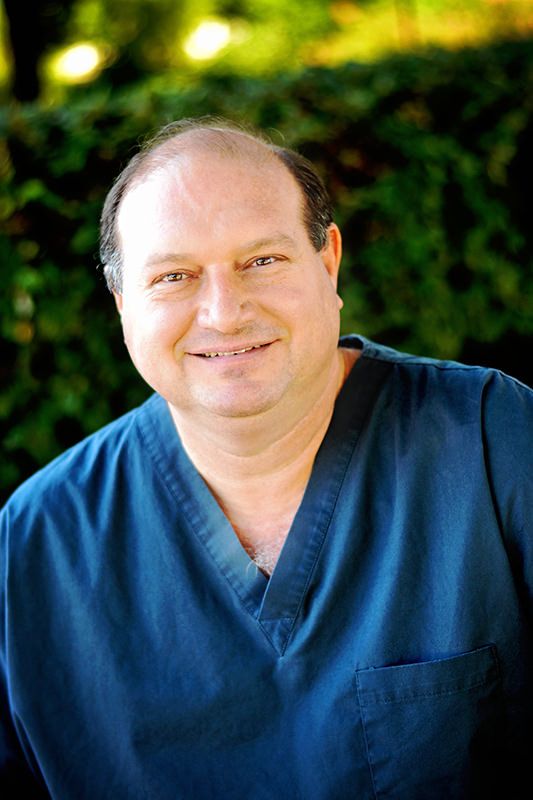nJoy Vision
10900 Hefner Pointe Drive, Suite 101
Oklahoma City, OK 73120
Phone: (405) 842-6060
Monday–Thursday: 8 a.m.–5 p.m.
Friday: 8 a.m.–12 p.m.
Laser Cataract Surgery in OKC
Laser cataract surgery at nJoy Vision in Oklahoma City (OKC) can help you look at the world through the eyes of a younger you. The femtosecond laser technology that brought us LASIK is now advancing cataract surgery—making it safer, more accurate, and more precise for our patients from the OKC metro area, including Norman, Moore, Edmond, and beyond.
In a rush? No worries.
We’ll send the info so you can read it later.
Request a Free Laser Cataract Info KitWhat Is Laser Cataract Surgery?
Femtosecond laser technology is bringing new levels of safety, accuracy, and predictability to cataract surgery. The laser performs the most challenging steps of traditional or manual cataract surgery. Using sophisticated 3D imaging, the laser creates precise incisions and assists the surgeon in performing the anterior capsulotomy, lens fragmentation, and corneal incisions.
Grammy Award winner Sandi Patty chose nJoy Vision for laser cataract surgery.
Clearer vision faster & more consistently with Laser Cataract Surgery
Cataracts are slow and quiet vision thieves. The chronic condition, which occurs more frequently as people age, causes the clear lens of the eye to become cloudy. When cataracts become bothersome or limit daily activities, that’s where nJoy Vision comes in with state-of-the-art laser cataract eye surgery.
Our advanced laser technology is revolutionizing cataract treatment
With precise and predictable femtosecond laser technology and the revolutionary CATALYS® Precision Laser System, we offer our patients the perfect combination of advanced cataract treatment and experienced eye surgeons at our Oklahoma City practice.
This means patients may experience unparalleled precision, better outcomes, and faster recovery times. Which means you may be looking at the world through the eyes of a younger you sooner than you think.
At nJoy Vision, looking younger isn’t just about appearances
It’s about perspective and vision. Two things cataracts can have a serious effect on.
Learn More About Laser Cataract Surgery in OKC
Is Laser Cataract Surgery Right for You?
When to schedule your surgery should be the question, not how you’re going to pay for it.
Financing OptionsSee why we’re leading the way with advanced treatment options and patient education.
Visit our Blog- Are there any side effects with laser cataract surgery?
-
Patients rarely experience serious complications following the procedure, but they do generally find they have an “adjustment” period of about 6 to 12 weeks where they need to learn to see up close again with the new lens. Some common side effects include:
- Dry eye condition: This typically lasts only about a month, and eye drops are an effective treatment.
- Redness and swelling: Some patients experience inflammation that lasts one or two weeks. Eye drops again can treat the inflammation and relieve symptoms.
- Floaters: Many people have floaters even without cataract surgery, but they may become more noticeable because the patient’s vision is clearer. Contact your eye surgeon if floaters don’t go away or obstruct your vision.
- Light sensitivity: Eyes are often more sensitive to light after cataract surgery because cataracts filter light. The eyes usually take a couple of days to adjust to enhanced vision.
Also, some people report glare or halos around lights, which generally diminish over time. More people state that the ability to see both near and far greatly outweighs any visual side effects they might have.
Most patients are able to perform 70-80% of their daily activities without corrective lenses.
- How much is laser cataract surgery in OKC?
-
The cost of laser cataract surgery in OKC varies based on your unique concerns because we tailor your laser cataract surgery to address your specific concerns. The best way to get an accurate cost estimate for your procedure at our Oklahoma City practice is to schedule a consultation with our nJoy Vision team. Our cataract surgery specialists will assess your needs, discuss your options, and provide detailed pricing. We also offer our patients convenient financing options.
- Can a cataract lens be replaced?
-
The intraocular lens (IOL) placed in your eye during cataract surgery typically remains in the eye after surgery. The lens almost never needs to be replaced. However, in rare cases, a shifted or dislocated IOL can warrant a lens replacement by your ophthalmologist.
- Can you have cataract surgery without lens replacement?
-
During cataract surgery, the clouded lens is usually removed and replaced with a clear, artificial lens. However, in certain high-risk or complex cases, a cataract may be removed without implanting an artificial lens.
- Can cataracts come back after laser surgery?
-
In most cases, a single cataract surgery will last a lifetime. However, some patients may experience posterior capsular opacification (secondary cataracts) months or years later, which can occur as part of the eye’s natural healing process after surgery. Secondary cataracts can typically be removed during a quick follow-up laser procedure.
- Will I still need glasses after cataract surgery?
-
Today, cataract surgeons can provide you options to REDUCE your dependence on glasses or contact lenses, but not completely eliminate their use. Depending on the freedom you desire, technology is available to allow you to perform most daily activities without corrective lenses. The most common circumstances where corrective lenses were required after surgery are night driving, reading in low-light situations, and reading very fine print.
- What if I have already had LASIK, RK, or another eye surgery?
-
Even if you have had another eye surgery such as LASIK, you may still be a good candidate for laser cataract surgery.
- Will standard (manual) cataract surgery be obsolete in the future?
-
The laser-assisted cataract procedure will still require some manual aspects, including removal of the cataract and insertion of the implant.
- What’s the recovery time for laser cataract surgery?
-
Patients typically notice their vision has improved immediately after the surgery, but it’s normal for vision to remain blurry for a day or 2, as the eye is still dilated. There are few restrictions for patients’ recovery after laser cataract surgery, but it is important to avoid lifting heavy objects or engage in strenuous exercise for one week.
- Will laser-assisted cataract surgery be covered by my insurance?
-
According to the CMS (Centers for Medicare & Medicaid Services), cataract removal and the insertion of a conventional implant will be covered regardless of whether the procedure is performed using the femtosecond cataract laser or conventional surgery. However, physicians will be allowed to charge for vision-correcting services when implanting a lens that corrects presbyopia or astigmatism, and/or using numerous technologies to aid in vision correction options.
- Why does nJoy Vision use the femtosecond cataract laser?
-
Today, cataract surgery is refractive surgery. nJoy Vision is dedicated to offering patients and providers with access to the most advanced and safest technology available. The use of the femtosecond laser to assist in the crucial steps in cataract surgery offers a safe procedure and excellent visual outcomes.
- How does the femtosecond cataract laser work?
-
The laser performs the most challenging steps of traditional or manual cataract surgery. Historically, a cataract procedure involved creating small incisions made manually with a blade. Using sophisticated 3D imaging, the laser will create safe and precise incisions.
The laser aids the surgeon in performing:
- Anterior capsulotomy—A capsulotomy is the opening in the clear, cellophane-like capsule that wraps the natural lens of the eye.
- Lens fragmentation—Softening and breaking up of the cataract, which allows for easier removal.
- Corneal incisions—Allows insertion of the instruments and the replacement lens.
- What is a femtosecond cataract laser?
-
The femtosecond cataract laser performs crucial aspects of the cataract procedure. It is a specialized device that uses advanced technology to precisely deliver its gentle energy. Femtosecond refers to the laser’s pulse duration, which is equivalent to one-millionth of one-billionth of a second. This ultrafast speed, along with the advanced guidance and imaging that the laser platform uses during the procedure, is precise, predictable and reproducible.
- What are the disadvantages of laser cataract surgery?
-
There are very few drawbacks to laser cataract surgery. However, patients should be aware that the procedure costs more than traditional cataract surgery.
- Is laser cataract surgery safe?
-
Even though traditional cataract surgery is considered safe, it does require the doctor to use a hand-held blade to make incisions in the cornea. Cataract surgery using a femtosecond laser offers precision and safety that traditional surgery can’t match. Cataract removal using the laser softens the cataract so it can be removed more gently with less energy.
- Is laser surgery better than traditional surgery for cataracts?
-
Traditional cataract surgery involves using handheld instruments to remove the cataract and replace it with a clear artificial lens. Laser cataract surgery replaces many key steps traditionally performed with handheld instruments, which may result in increased accuracy and safety.
The benefits of laser-assisted cataract surgery include:
- A technologically advanced procedure using 3D imaging
- A treatment with potentially little or no discomfort
- A more precise treatment
- Gentler and easier cataract removal
- More personalized treatment that may reduce the need for glasses or contact lenses after surgery.
Laser cataract surgery replaces many key steps traditionally performed with hand held instruments, which may result in increased accuracy and safety.
- What causes cataracts?
-
Cataracts are primarily caused by age-related changes to the eye, causing clouded vision. Other contributing factors include prolonged UV light exposure, smoking, excessive alcohol consumption, certain medical conditions like diabetes, and some medications. Cataracts can also result from eye injuries or congenital conditions.
- What is a cataract?
-
A cataract occurs when the eye’s lens, which is usually clear, gets progressively cloudy. We normally have a clear view because when light passes through a clear lens, the light can focus to a point. Cataracts distort light, creating a blurred view. Your vision with a cataract may look fuzzy, and colors might be muted. Because this condition gradually gets worse, you may not consider treatment until cataracts limit your daily activities. Most people develop cataracts sometime after the age of 50.
Depending on your pre-operative vision and desired visual result, your doctor may recommend a tailored treatment plan that could include creating ultra-precise laser incisions in the cornea and a specific lens implant type. This tailored treatment may reduce your need for glasses or contact lenses after surgery.



